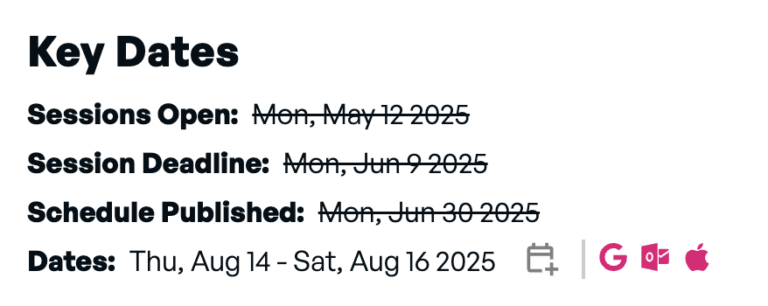
By Randy Ferguson
Data security is non-negotiable, at rest as well as in transit. Chippagiri talks on bring-your-own-key (BYOK) systems and customer-managed keys (CMKs), so empowering tenants over their encryption policies. Furthermore, protecting sensitive fields without influencing analytics or application performance are data masking and tokenization.
Trusted Execution Environments (TEEs) let confidential computing guarantee that data stays encrypted even during processing. Two hardware-based solutions that secure in-use data are Intel SGX and AMD SEV; this is a major development for multi-tenant systems.
With on-demand scalability, high availability, and economic efficiency, cloud computing has ushered in a new era of digital transformation empowering companies. Among the main paradigms of the cloud is multi-tenancy, in which several tenants share the same infrastructure, applications, or databases while keeping isolated and safe access to their own data. This shared model does, however, bring a difficult layer of security issues. Ensuring data privacy, access control, and regulatory compliance takes front stage as businesses migrate mission-critical workloads to the cloud.
- Separate Application and Database per Tenant
- Shared Application with Separate Databases
- Shared Application and Database with Logical Separation (e.g., schemas)
Detecting lateral movement and unusual traffic patterns requires firewalls and intrusion detection systems catered to multi-tenant environments.
Principal Difficulties in Multi-Tenant Security
Privacy Computing: Confidentiality
- Ensuring that one tenant’s data is totally isolated and unreachable to others is data isolation.
- Managing roles, rights, and identities among shared infrastructure is known as access management.
- Compliance and Auditability: Following laws including PCI-DSS, HIPAA, and GDPR.
- Preventing performance degradation or denial-of-service brought on by noisy neighbors calls for resource contention.
- Tenant lifecycle management is securely provisioning and deproversing tenant access and data.
Though still computationally demanding, homomorphic encryption lets computations be carried out on encrypted data. In analytics-as–a-service systems, where consumers seek data privacy but also actionable insights, this can be quite useful.
Compliance, Governance, and Recommendations
There are concerns with regards to how dangerous security gaps might arise from unclear definition of these roles. Assuming, for instance, that the cloud provider encrypts data by default could leave tenant data vulnerable if improperly set. A real-world example would be the 2020 Capital One breach occurred due to a misconfigured web application firewall (WAF) running in a multi-tenant AWS environment. Though AWS was secure, the tenant configuration flaw led to data exfiltration.
- Cloud Providers (CSPs) manage physical hardware, network, hypervisors infrastructure-level security.
- Tenant responsibility for application-level security includes data classification, identity management, endpoint security.
Cloud security’s foundation is IAM. The paper emphasizes how Multi- Factor Authentication (MFA) and Role-Based Access Control (RBAC) can lower illegal access concerns. Best practices consist in:
Without disclosing them to one another, SMPC lets several parties jointly calculate a function over their inputs. SMPC guarantees privacy for multi-tenant artificial intelligence/machine learning systems while yet allowing cooperative model training.
- IAM, or identity and access management
The Shared Responsibility Model is among the most crucial conceptual instrument available in cloud security. Under a multi-tenant cloud, tasks are distributed:
- Creating least privilege roles
- Utilizing IdPs, or centralized identity providers
- Regularly auditing access records
- Mechanisms of Data Protection
Encryption in homomorphic form
- Network Security
Network security is a critical pillar in safeguarding multi-tenant cloud environments. In a shared architecture, where multiple tenants operate on the same infrastructure, a breach in network isolation can lead to data exfiltration, lateral movement of malicious actors, or unintended access to sensitive services. The risk is amplified by the dynamic and ephemeral nature of cloud workloads, making robust and proactive network security essential. Tenant separation must also reach network levels. Effective practices comprise:
- Virtual private clouds (VPCs)
- Network Access Control Notes (ACLs)
- Micro segmentation allows one to enforce fine-grained firewall rules separating different services.
The multi-tenant model is becoming a mainstay for SaaS and PaaS offers as companies double down on cloud adoption. Unquestionably, the efficiency increases have benefits, but they also increase security risk. From simple IAM to SMPC and confidential computing, the security scene is changing quickly. In shared environments, both tenants and cloud providers must remain proactive, cooperative, and alert in preserving digital trust.
The way we treat innovative security technologies that go beyond conventional protections is exceptional.
Clearly, the advantages are reduced cost and improved resource economy. This architecture raises a crucial issue, though: How can we make sure tenants neither maliciously nor inadvertently access each other’s data or resources?
Secure Multi-Party Computing (SMPC)
Understanding Multi-Tenant Designs
Security is also a governance matter and a matter of technology in multi-tenancy. Companies have to contend with a more complex law of data sovereignty, compliance reporting, and controls.
The study’s primary methodologies include:
Continuous compliance monitoring: Azure Policy, AWS Config, and Organization Policy in GCP help to detect non-compliant states. They also automate remediation of non-compliant configuration through policy-as-code enforcement and guardrails.
Audit Trails: Keep all network activity, configuration changes, admin activity, and access requests in a permanent and tamper-proof record state. The requirements of security and compliance are that they are time-stamped and tenant-isolated and tamper-proof.
Apply Zero Trust: Assume breach. Mandate device posture, location, behavioral context, and identity authentication before access is granted to sensitive workloads or systems. The granular access model of zero trust is amenable to multi-tenancy.
Tenant-specific SLAs and security agreements: Security must be clearly defined in service-level agreements (SLAs), in particular in vertical markets like government, health care, and finance. The agreements must clearly define how data is to be protected, what will be done in case of a breach, and what every party will be responsible for in a shared responsibility model.
Multi-national firms must store tenant data in appropriate geographical areas based on local regulations such as CCPA (California), PDPA (Singapore), or GDPR (EU). This typically requires data zoning at a tenant level, programmable storage areas, and network and application geo-fencing. Basic guidelines to follow with regards to organizational governance are supplied by frameworks such as ISO/IEC 27001, NIST Cybersecurity Framework (CSF), or Cloud Security Alliance’s Cloud Controls Matrix (CCM). The frameworks enable mapping business risks to technical controls to associate security with organizational decision-making. Implemented responsibly, cloud governance supports a stronger overall security position, instills customer confidence, streamlines audits, and ensures compliance. Cloud governance is a market differentiator in compliance-driven markets for multi-tenant platforms.
Under a multi-tenant arrangement, one software instance or cloud service serves several users. These renters might share databases, tools, or even computational capacity. Various degrees of separation exist:
Modern Security Strategies for Future-Gen Cloud Computing
Examining the architectural and operational complexity of securing multi-tenant cloud systems, researcher Srinivas Chippagiri (2025) writes in his study paper “A Study of Cloud Security Frameworks for Safeguarding Multi-Tenant Cloud Architectures.” This paper summarizes the main conclusions of the research and develops on them in the larger framework of changing security policies in cloud computing.
Shared Responsibility: Who Owns What?
Technology and Structures for Managing Multi-Tenancy
These difficulties call for a disciplined security architecture covering policies, technologies, and governance structures.
Conclusion
Chippagiri (2025) claims that the fundamental security issues in multi-tenant buildings consist in:






